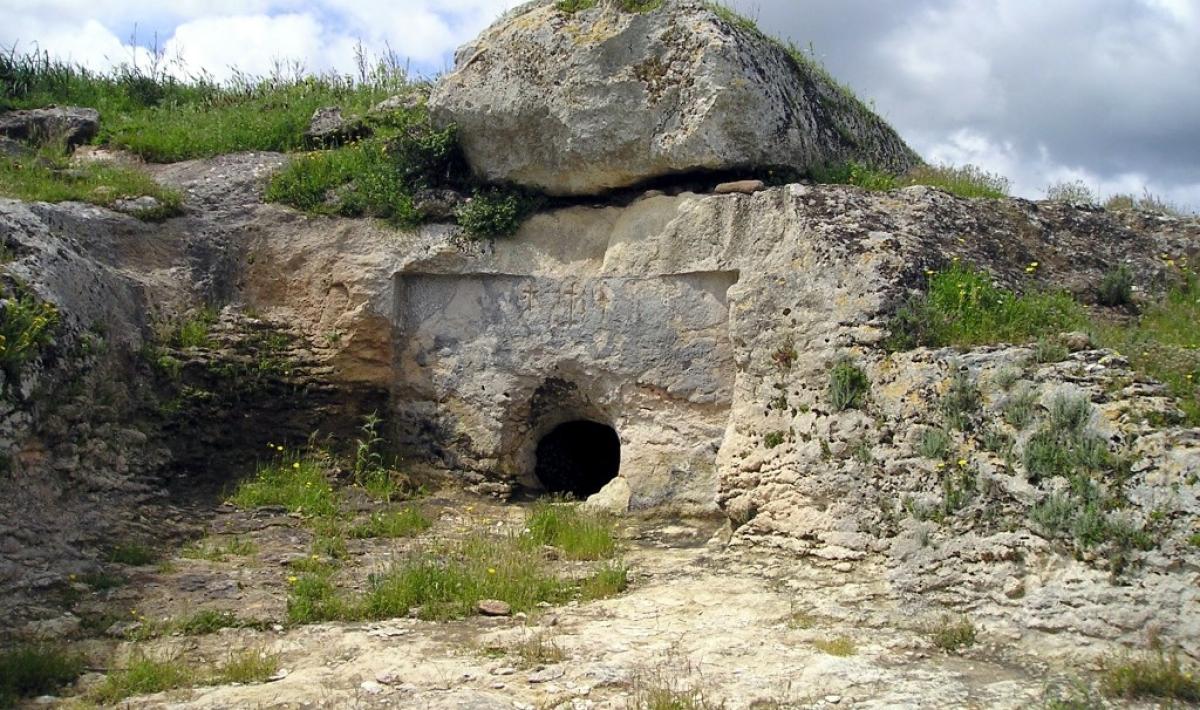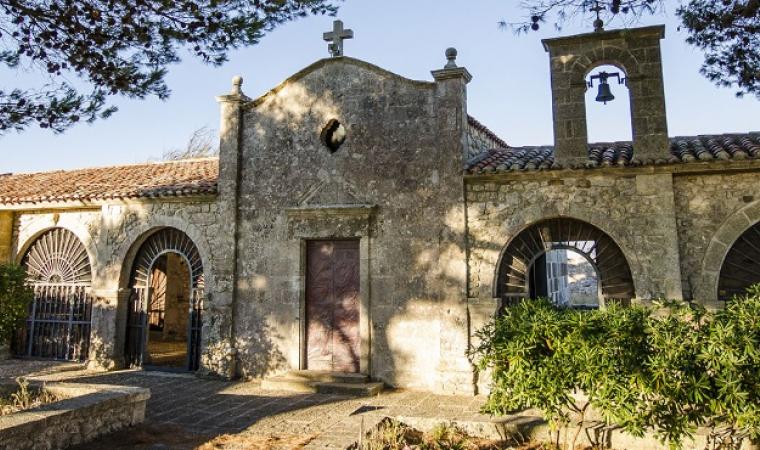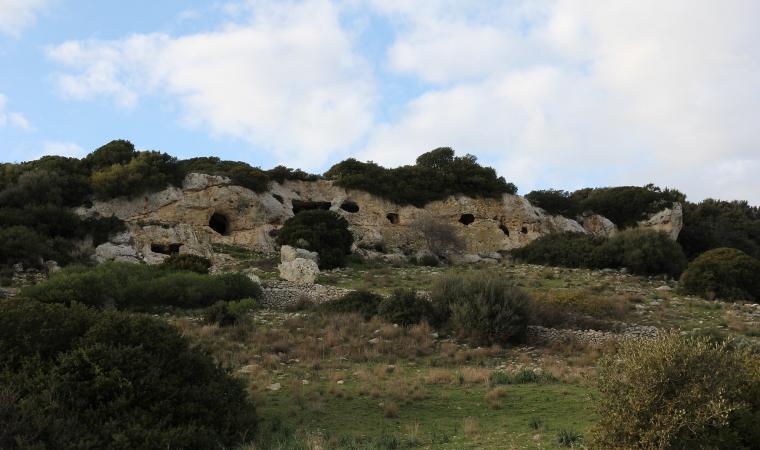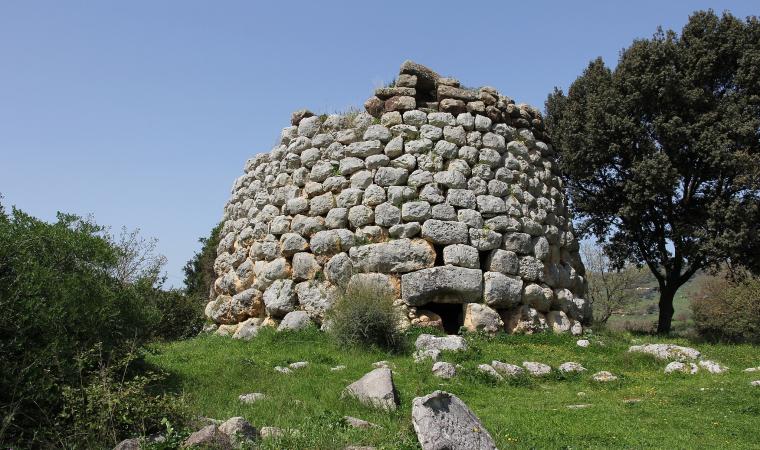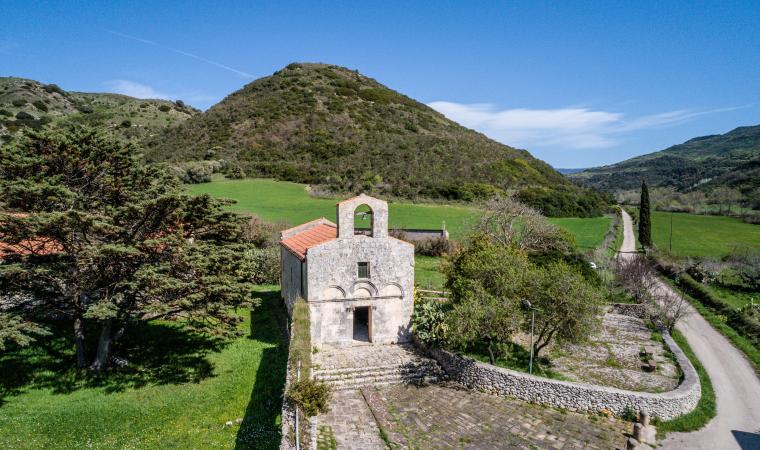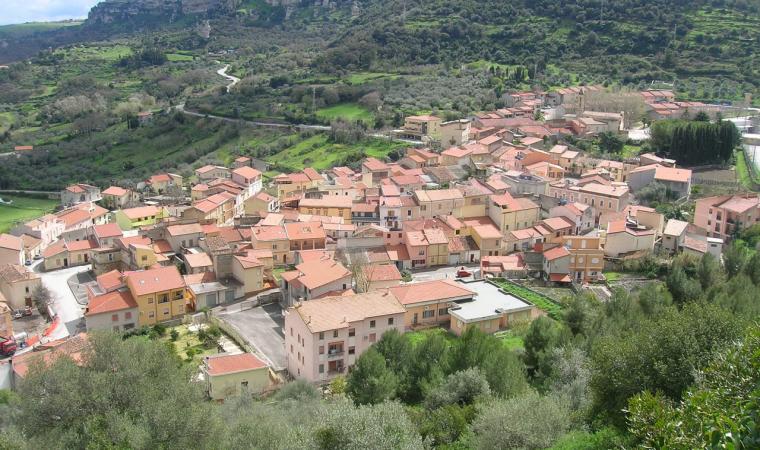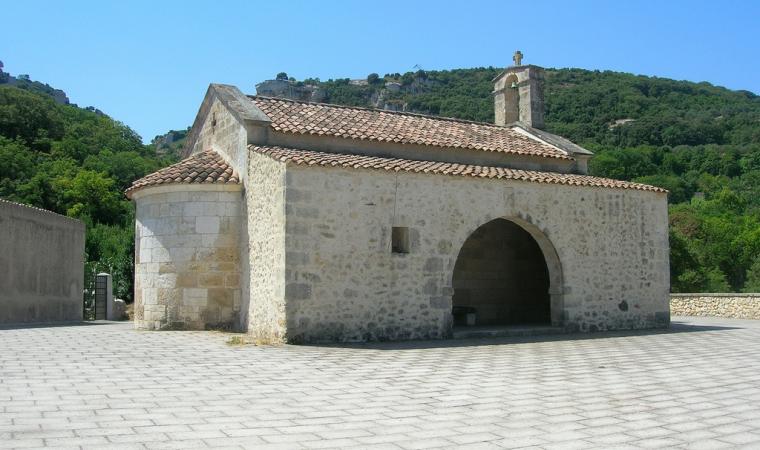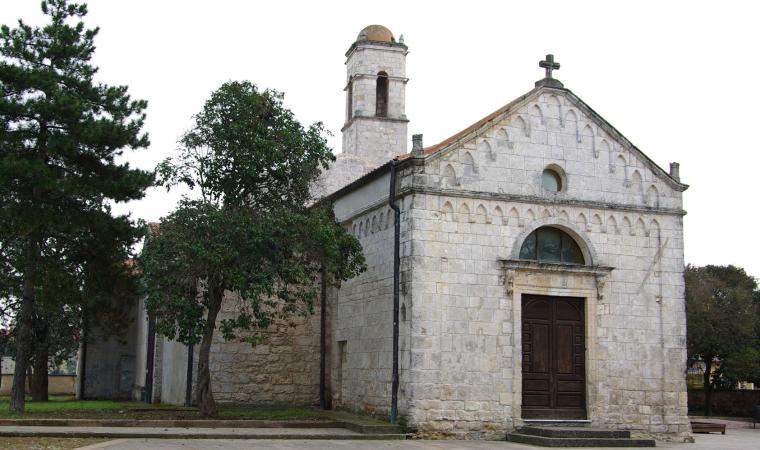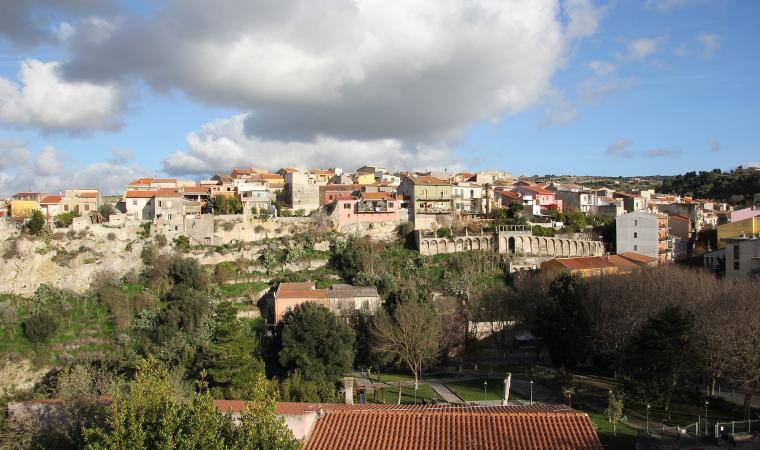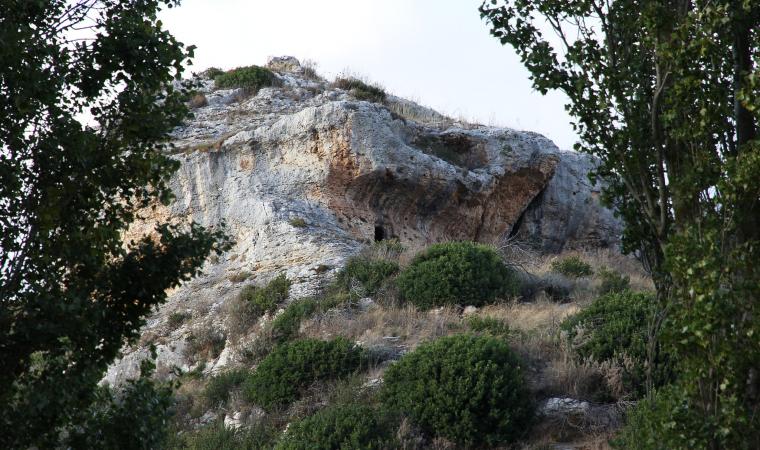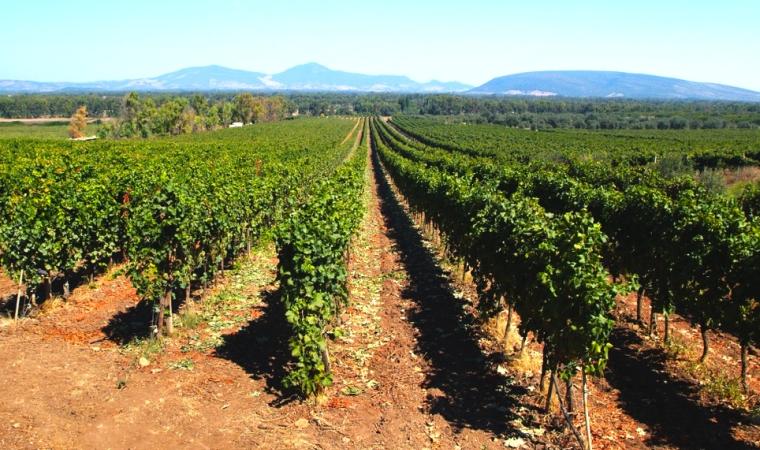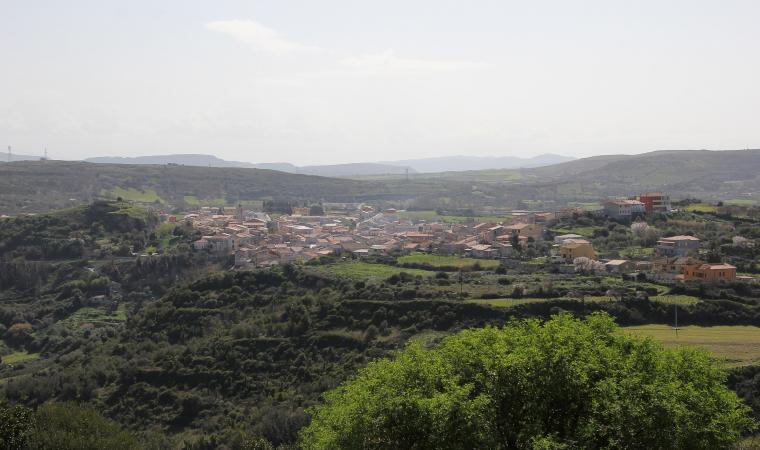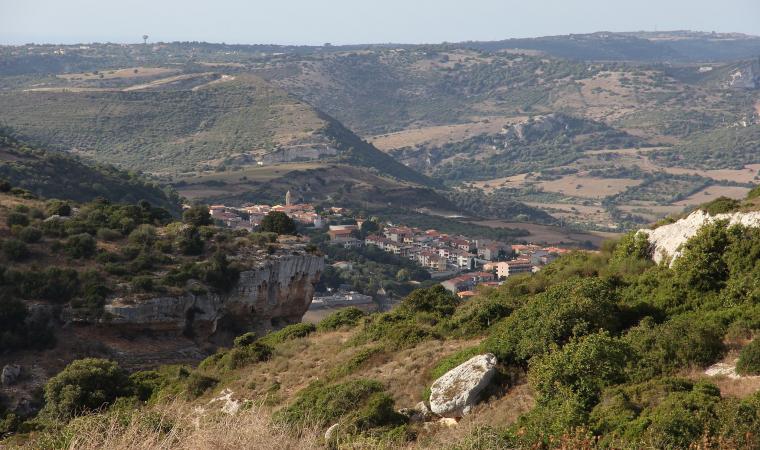In the Sassari area there is a place where the pre-Nuraghic remnants ‘merge’ with the Nuragic monuments: it is the necropolis of Sa Figu, the most important prehistoric heritage of the territory of Ittiri. It extends along the northern edge of the Coros plateau that gives its name to a Logudorese sub-region. Four kilometres from the town, the archaeological area can be reached from the sanctuary of San Maurizio by climbing up to the peak. The complex is composed of eleven hypogea, a megalithic circle and the base of an archaic Nuraghe (or ‘protonuraghe’). It has survived at least three prehistoric eras: the late Neolithic (end of 4th millennium BC), when the first nucleus of Domus de Janas was excavated; the Eneolithic and Copper age; plus the Late and Mid Bronze, when hypogeum ‘architectural façades’ were widespread. Of the sepultures of Sa Figu, three are simple and original Domus de Janas, two have a single cella and one had a number of cellae, with a Dromos (‘andito’), an anti-cella and a cella on which secondary areas open. At least three are expanded Domus, with additions to the façade of stele and exedra. Three are new set-ups or have been restructured in the Bronze Age. The largest tomb was originally composed of five rooms, becoming a single room following the demolition of the partition walls. An anti-cella with decorated walls leads into the cella where three rooms opened up. The hypogea have revealed a number of Nuragic finds, especially the famous bronze statuette of the launeddas player.
On the edge of the Coros plateau stands a megalithic enclosure that dates back to the Eneolithic period, consisting of ten orthostatic boulders (plus one on its side). Set side-by-side, they form a semi-circular area of worship extending ten metres in diameter. One rather suggestive (and macabre) theory suggests the monument was a place for the decaying of corpses, exposed to the voracity of vultures. A little further downstream are the Domus de Janas of Ochila, some decorated with symbolic and architectural elements in relief. An archaeological park forms the surroundings, in which the hypogea of Musellos and the area of Runara can be visited, consisting of two dolmens, one of which is intact (two and a half metres long and two metres high), arrangements of menhirs, a megalithic wall and two Nuragic towers. The remnants from the Bronze Age are endless - the remains of about 60 Nuraghe structures, ten villages, two Tombs of Giants and a sacred well. The evolution of the Nuragic civilisation is also represented by the elementary structures such as Nuraghe structures in a 'corridor' and mono-towers, along with monuments bearing a complex construction, amongst which well-preserved examples stand out. There is the Nuraghe Majore, with a larger tower extending over several floors and the side covered with perfectly-functioning walling. Some Nuragic towers were built in dark basalt and light limestone for a two-tone effect.

